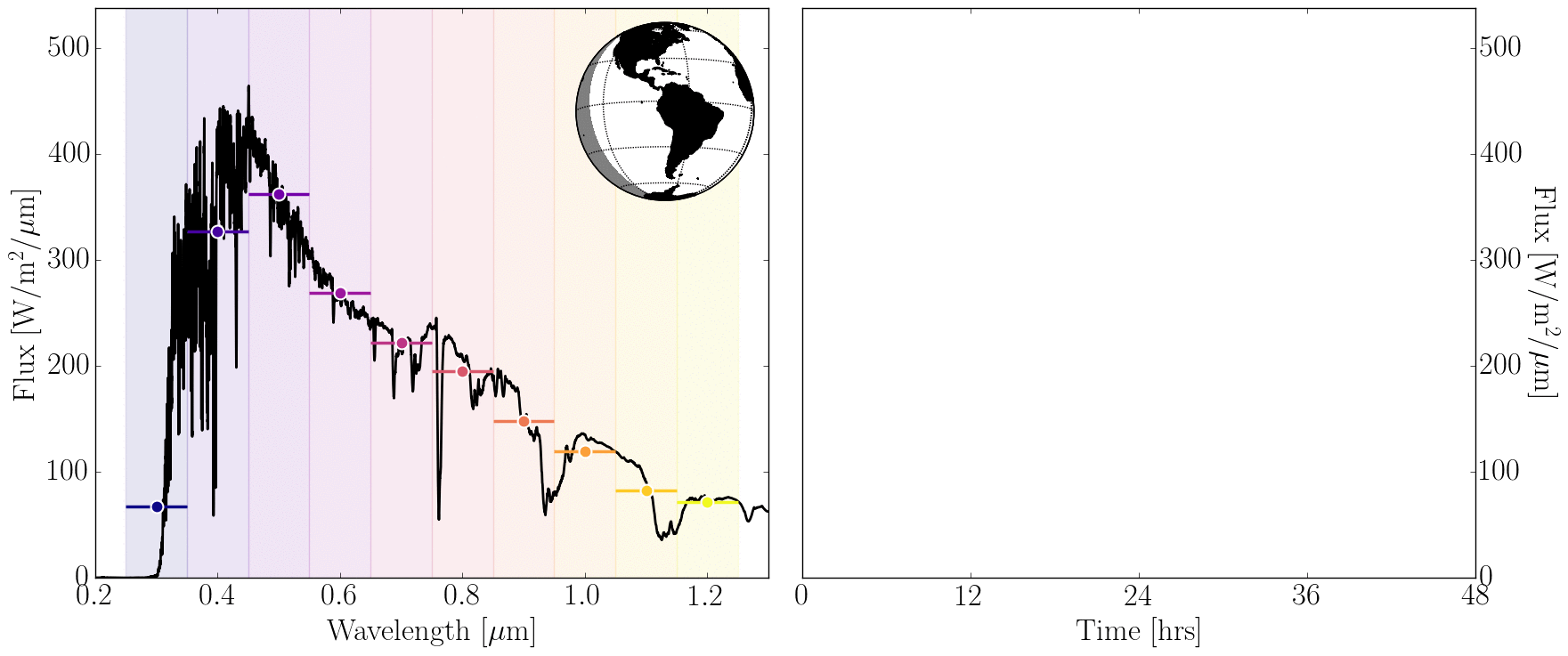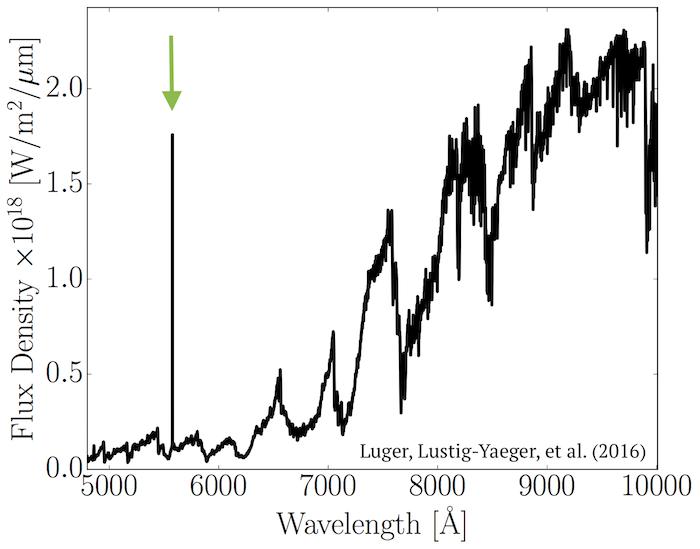My research revolves around the central theme of extracting physical insights
from astronomical observations of terrestrial exoplanets. From the planets in
the Solar System we know that planets can be rich with complexity. But like the
study of stars, exoplanets are (at best) point sources of light. That is, all
light from the planet falls into a single dot on a telescope CCD. To learn
about the underlying nature of terrestrial exoplanets we must carefully examine
that one dot.
"Look again at that dot." — Carl Sagan
Detecting and Characterizing the Atmospheres of the TRAPPIST-1 Planets
The James Webb Space Telescope (JWST) will offer the first opportunity to characterize terrestrial exoplanets with sufficient precision to identify high mean molecular weight atmospheres, and TRAPPIST-1's seven known transiting Earth-sized planets are particularly favorable targets. To assist community preparations for JWST observations, we used simulations of plausible post-ocean-loss and habitable environments for the TRAPPIST-1 exoplanets, and modeled all bright object time-series spectroscopy modes and all Mid-Infrared Instrument photometry filters to determine optimal observing strategies for atmospheric detection and characterization using both transmission and emission observations.

We found that transmission spectroscopy with the Near-Infrared Spectrograph Prism is optimal for detecting terrestrial, CO2-containing atmospheres, potentially in fewer than 10 transits for all seven TRAPPIST-1 planets, if they lack high-altitude aerosols. If the TRAPPIST-1 planets possess Venus-like H2SO4 aerosols, up to 12 times more transits may be required to detect an atmosphere. We presented a list of optimal instruments and observing modes for the detection of individual molecular species in a given terrestrial atmosphere and an observational strategy for discriminating between evolutionary states. We found that water may be prohibitively difficult to detect in both Venus-like and habitable atmospheres, due to its presence lower in the atmosphere where transmission spectra are less sensitive. Although the presence of biogenic O2 and O3 will be extremely challenging to detect, abiotically produced oxygen from past ocean loss may be detectable for all seven TRAPPIST-1 planets via O2–O2 collisionally induced absorption at 1.06 and 1.27 μm, or via NIR O3 features for the outer three planets. Our results constitute a suite of hypotheses on the nature and detectability of highly evolved terrestrial exoplanet atmospheres that may be tested with JWST.
Glint Mapping to Detect Exoplanet Oceans
Observing multiband, time-series photometery of an exoplanet as it rotates on its axis allows for the distribution and types of surfaces to be investigated. Even though no direct spatial information is contained in exoplanet observations, "rotational unmixing" offers an opportunity to infer spatial variations using the fact that planets spin on their axes as they orbit their host star.



